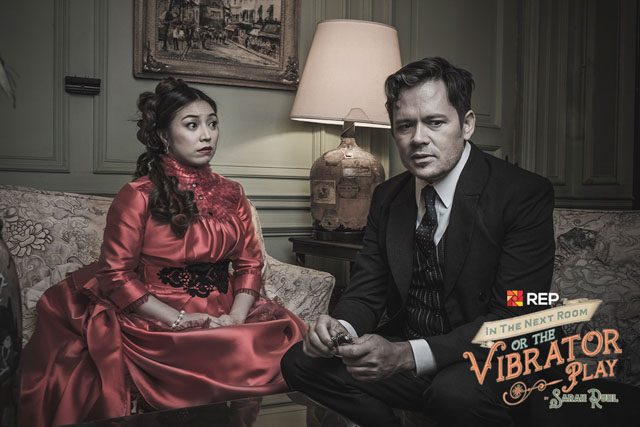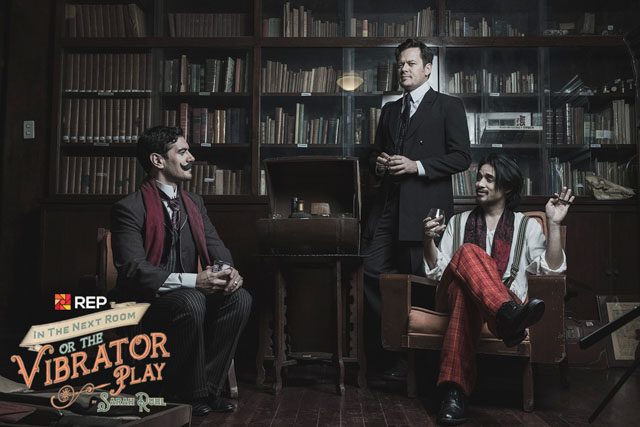SUMMARY
This is AI generated summarization, which may have errors. For context, always refer to the full article.

In 19th-century America, women wore cumbersome corsets that squeezed their internal organs, bustles and crinolines that gave their rump the silhouette of an equine mare’s crest – horses were then a man’s most prized possession – layers of petticoats that required servants to dress and undress, and a polonaise, long trains that made walking in anything but the most pristine floors impractical.
Women’s suffrage – a right blatantly omitted along with with race equality by the United States’ founding fathers – had yet to be won and half of the nation had no say in governance. Ladies who did not conform to Victorian society’s norm of prim, proper, docile, and submissive were diagnosed as “hysterical” by the male-ruled medical establishment.
Electric lighting first became available in New York City in 1882 but there were few if any labor-saving electric devices to liberate women from the drudgery of house chores. The Bendix Corporation would only introduce the first domestic automatic washing machine a century later in 1937. But Doctor Joseph Mortimer Granville would invent the world’s first vibrator to cure “hysterical” women in 1883.
So a comedy written 2009 on the introduction of the vibrator as a treatment for women’s “hysteria” in sexually repressed 19th-century America is bound to be funny for contemporary audiences. And in 21st century Philippines—the only country in the world without divorce despite 23 percent of married women experiencing spousal abuse according to National Statistics Office’s “Statistics on Violence Against Filipino Women”—there is biting poignancy underlying all the hilarity.
On March 24, 7pm, Repertory Philippines debuts Sarah Ruhl’s The Next Room: The Vibrator Play at the Onstage Theater, Greenbelt 1, Makati City. The play runs until April 23.
Directed by Chris Millado, vice president and artistic director of the Cultural Center of the Philippines, the comedy stars Giannina Ocampo as Catherine Givings, the lonely, unhappy, and untouched wife of Dr. Givings, played by Joshua Spafford, uses the newly invented electric vibrator to induce “paroxysms”—orgasms—to cure women—as well as men—of “hysterical” tendencies. Visiting the doctor is Sabrina Daldry, played by Caisa Borromeo, seeking treatment for depression at the insistence of her husband Mr. Daldry, played by Hans Eckstein. Also visiting the clinic is Leo Irving, played by Jef Flores, an artist and bohemian who is a complete opposite to Victorian contemporaries, seeking treatment for his broken heart. Annie, Dr. Giving’s assistant, is played by Tami Monsod.
Gaslighting and light bulbs

At dress rehearsals, Rappler was allowed to view the production. The ornate set and meticulous costumes effectively transported audiences to 19th century New York. As the name of play states, the the set consists of two rooms, Givings’ living room and the clinic in the next room. It emphasizes the double entendres, the double standards, and duality of the characters. Caisa Borromeo also demonstrated how authentic her many-layered costume allows her to better inhabit her character.
Audiences were tickled by how characters marveled at the newfangled light bulbs and how the sexually frustrated women discussed orgasms—as well as the lack of it from their inattentive husbands—without actually explicitly stating such words as “orgasm” and “vagina.”
Aside from eliciting guffaws and cackles, the comedy also demonstrated how men of the day convinced their women they were the ones with the problem, and not the men.
In the 21st century, how abusive men manipulate women into questioning their own sanity and convince them that they are just being “hysterical” is now called “gaslighting”—named after the 1938 play Gas Light where husband convinces his wife she is just imagining things when the gas light is truly dimming.

It is timely that a comedy set at the birth of electric lighting reveals how the still often-used ploy of “gaslighting” was once the accepted norm. The comedy’s hilarity is the sugar that makes the medicine of truth palatable.
For details, call Repertory Philippines at (+632)8433570, Ticketworld at (+632) 891.9999 or visit ticketworld.com.ph, repertoryphilippines.ph, as well as on Facebook, Instagram, and Twitter. – Rappler.com
Writer, graphic designer, and business owner Rome Jorge is passionate about the arts. Formerly the Editor-in-Chief of asianTraveler Magazine, Lifestyle Editor of The Manila Times, and cover story writer for MEGA and Lifestyle Asia Magazines, Rome Jorge has also covered terror attacks, military mutinies, and mass demonstrations as well as reproductive health, gender equality, climate change, HIV/AIDS and other important issues. He is also the proprietor of Strawberry Jams Music Studio.
Add a comment
How does this make you feel?





There are no comments yet. Add your comment to start the conversation.